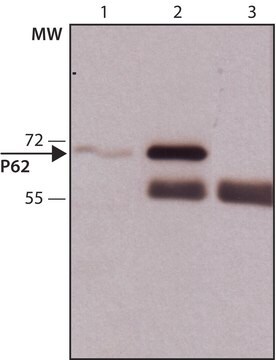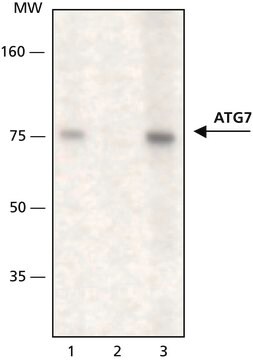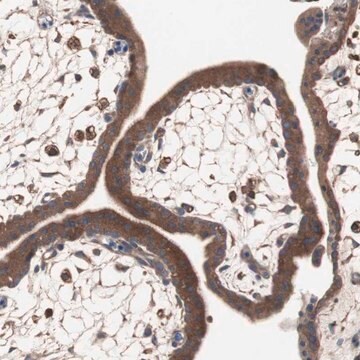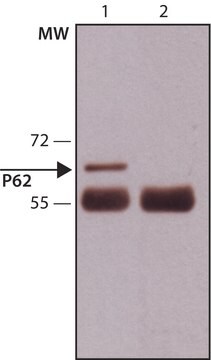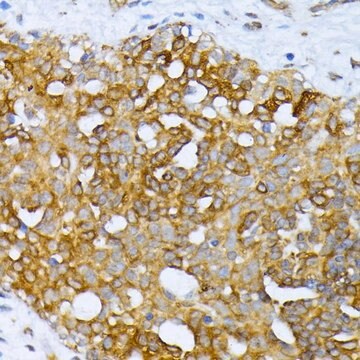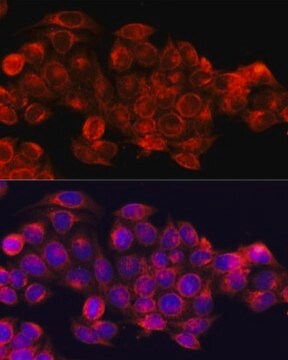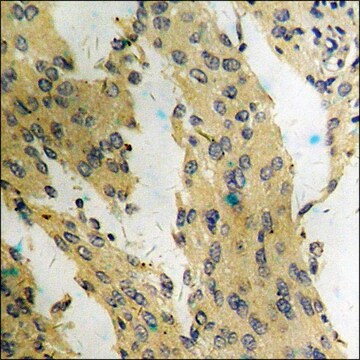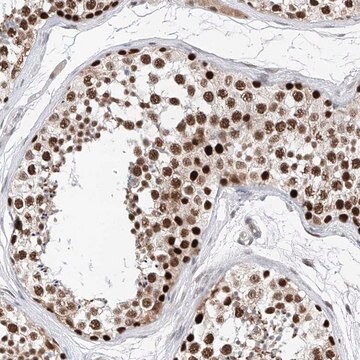Kluczowe dokumenty
SAB4200304
Anti-Atg7 antibody, Mouse monoclonal
clone ATG7-13, purified from hybridoma cell culture
Synonim(y):
Anti-ATG12-activating enzyme E1 ATG7, Anti-Autophagy related 7 homolog (S. cerevisiae), APG7-like, APG7L, GSA7, APG7 autophagy 7-like, Anti-Autophagy-related protein 7, Anti-HAGP7, Anti-Ubiquitin activating enzyme E1-like protein, Anti-Ubiquitin-activating enzyme E1-like protein, Anti-Ubiquitin-like modifier-activating enzyme ATG7
About This Item
Polecane produkty
pochodzenie biologiczne
mouse
Poziom jakości
białko sprzężone
unconjugated
forma przeciwciała
purified from hybridoma cell culture
rodzaj przeciwciała
primary antibodies
klon
ATG7-13, monoclonal
Formularz
buffered aqueous solution
masa cząsteczkowa
antigen ~75 kDa
reaktywność gatunkowa
human, mouse, rat
stężenie
~1.0 mg/mL
metody
immunoprecipitation (IP): suitable
western blot: 2-4 μg/mL using whole extracts of HEK-293T or U87 cells
izotyp
IgG1
numer dostępu UniProt
Warunki transportu
dry ice
temp. przechowywania
−20°C
docelowa modyfikacja potranslacyjna
unmodified
informacje o genach
human ... ATG7(10533)
mouse ... Atg7(74244)
rat ... Atg7(312647)
Powiązane kategorie
Opis ogólny
Immunogen
Zastosowanie
- immunofluorescence
- immunohistochemistry (IHC)
- western blotting
- immunoprecipitation
Działania biochem./fizjol.
Postać fizyczna
Oświadczenie o zrzeczeniu się odpowiedzialności
Nie możesz znaleźć właściwego produktu?
Wypróbuj nasz Narzędzie selektora produktów.
polecane
Kod klasy składowania
10 - Combustible liquids
Temperatura zapłonu (°F)
Not applicable
Temperatura zapłonu (°C)
Not applicable
Wybierz jedną z najnowszych wersji:
Certyfikaty analizy (CoA)
Nie widzisz odpowiedniej wersji?
Jeśli potrzebujesz konkretnej wersji, możesz wyszukać konkretny certyfikat według numeru partii lub serii.
Masz już ten produkt?
Dokumenty związane z niedawno zakupionymi produktami zostały zamieszczone w Bibliotece dokumentów.
Nasz zespół naukowców ma doświadczenie we wszystkich obszarach badań, w tym w naukach przyrodniczych, materiałoznawstwie, syntezie chemicznej, chromatografii, analityce i wielu innych dziedzinach.
Skontaktuj się z zespołem ds. pomocy technicznej